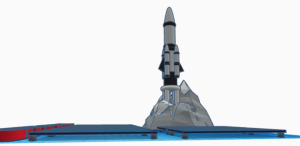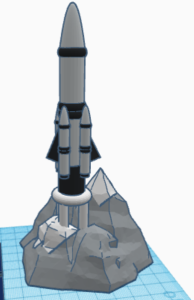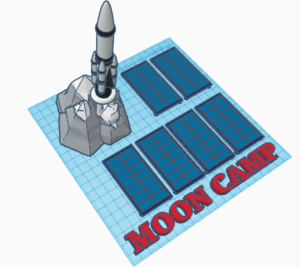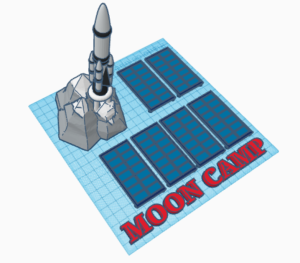BETWEEN THE ROCKS by stand alone
IES CERVANTES MADRID-MADRID Spain 14 years old 2 / 2 English Moon
Project description
We made a moon camp which consists of a rocket in between rocks in the mountains, standing on a base.
In this case they are Stand-Alone Solar PV Power Systems which rely on solar power only. These systems can consist of the PV modules and a load only or they can include batteries for energy storage. When using batteries charge regulators are included, which switch off the PV modules when batteries are fully charged and may switch off the load to prevent the batteries from being discharged below a certain limit.
We chose this place because you are not only closer to space rather you are higher up and therefore further away from the center of Earth’s gravity.
A booster is a rocket (or rocket engine) used either in the first stage of a multistage launch vehicle or in parallel with longer-burning sustainer rockets to augment the space vehicle’s takeoff thrust and payload capability.
The nose cone is the forward-most part of the rocket. The purpose of the nose is to reduce the aerodynamic drag on the model.
This is the body of the rocket, which normally includes a nose cone, body tube, launch lug, shock cord and parachute string, recovery system, wadding, fins and centering rings.
To launch a rocket the action is the force produced by the expulsion of gas, smoke, and flames from the nozzle end of a rocket engine. The reaction force propels the rocket in the opposite direction.
This is one of the two fins a rocket has, the reason rockets have fins has to do with stability. The fins help the rocket keep pointing in the direction it launched. When a rocket is flying through the air, changes in the air can make the rocket wobble. If it wobbles too much it can go off course.
The category of our moon camp is about a rocket being launched from a mountain because the atmosphere is less thick at altitude, so it would be possible to make use of a more vacuum-optimized nozzle, and have less air ahead of the rocket’s path to fight against. Imagine that we choose to place a new launch pad at the top of Pikes Peak, because it is close to the workforce, it has a paved road all the way to the top of the mountain, and is fairly high up with a summit at 4,302 m (14,114 feet). At this altitude, the atmosphere is already 40% less dense than it is at sea level.
We use solar panels to maintain the energy. The reduced fuel mass significantly reduces launch costs while delivering robust in-space propulsion capable of sending robotic and crewed missions well beyond low Earth orbit to distant destinations, like the Moon, Mars, and the outer solar system.
#3D Design
Other Projects
Los investigadores espaciales












